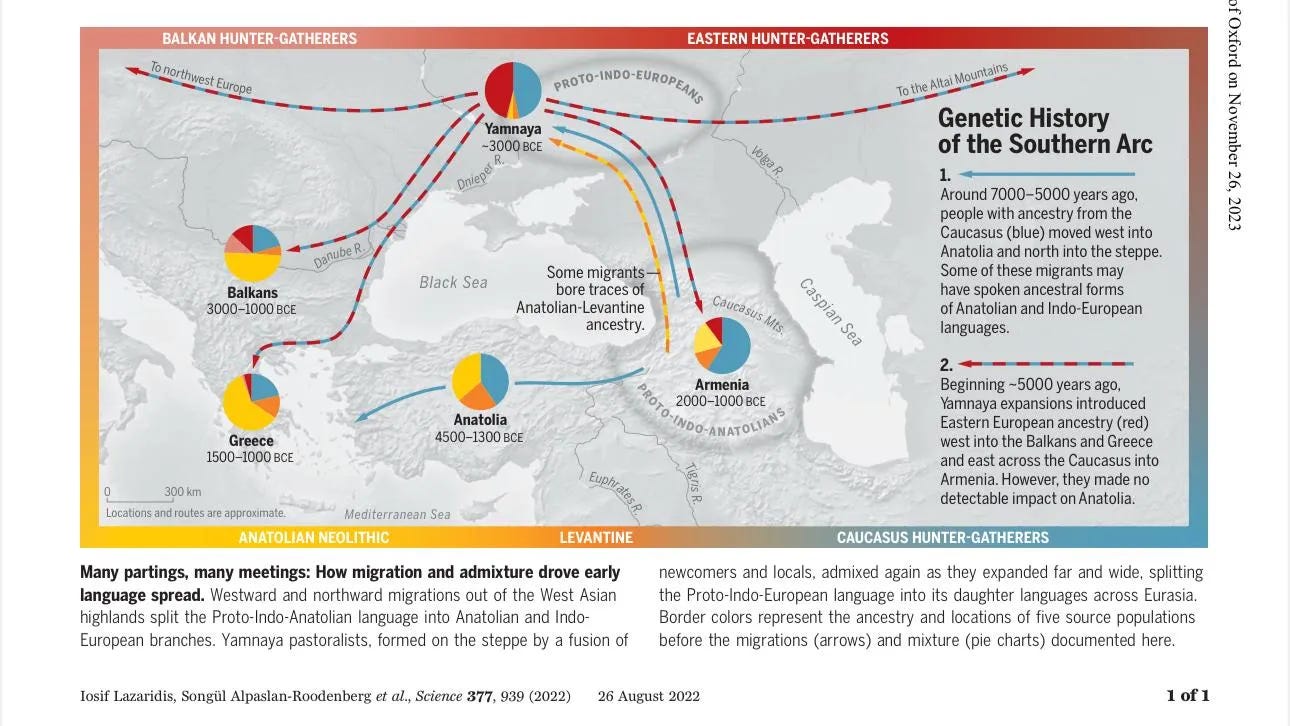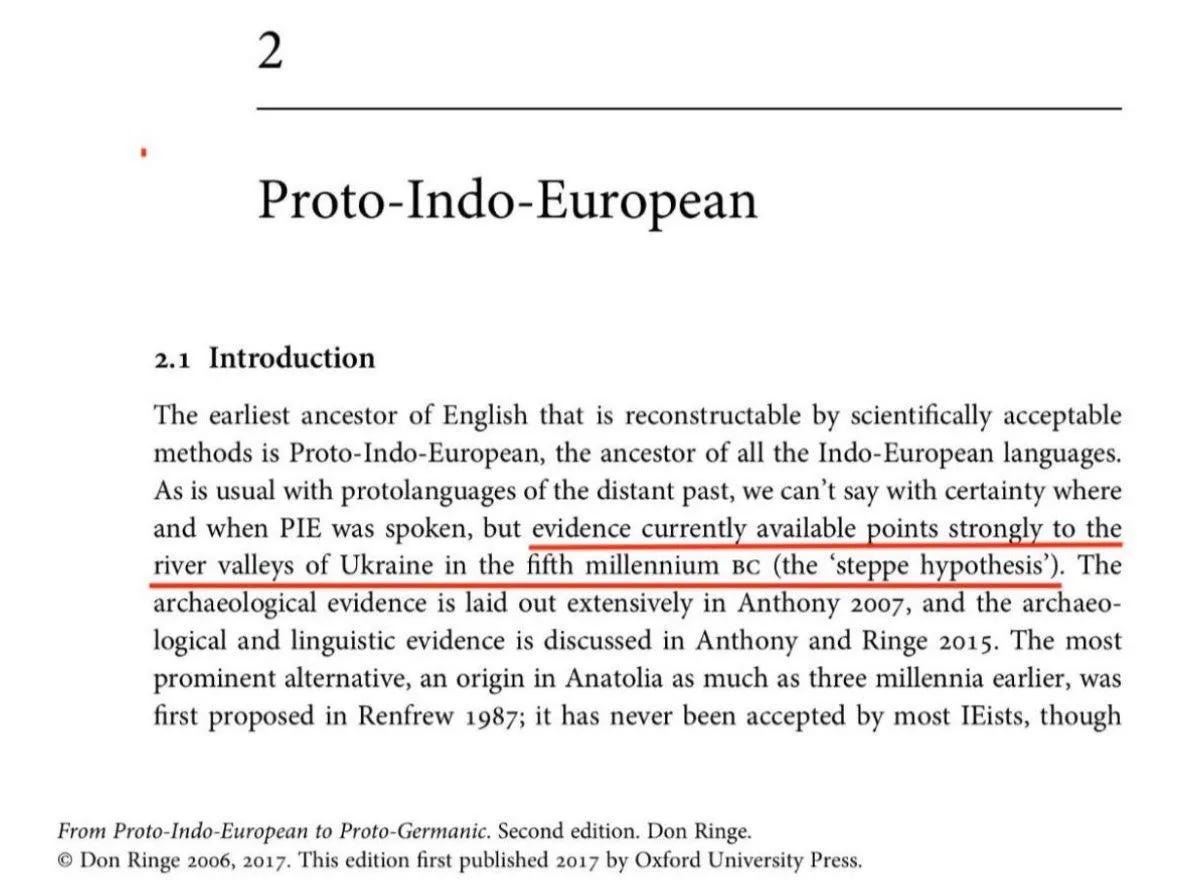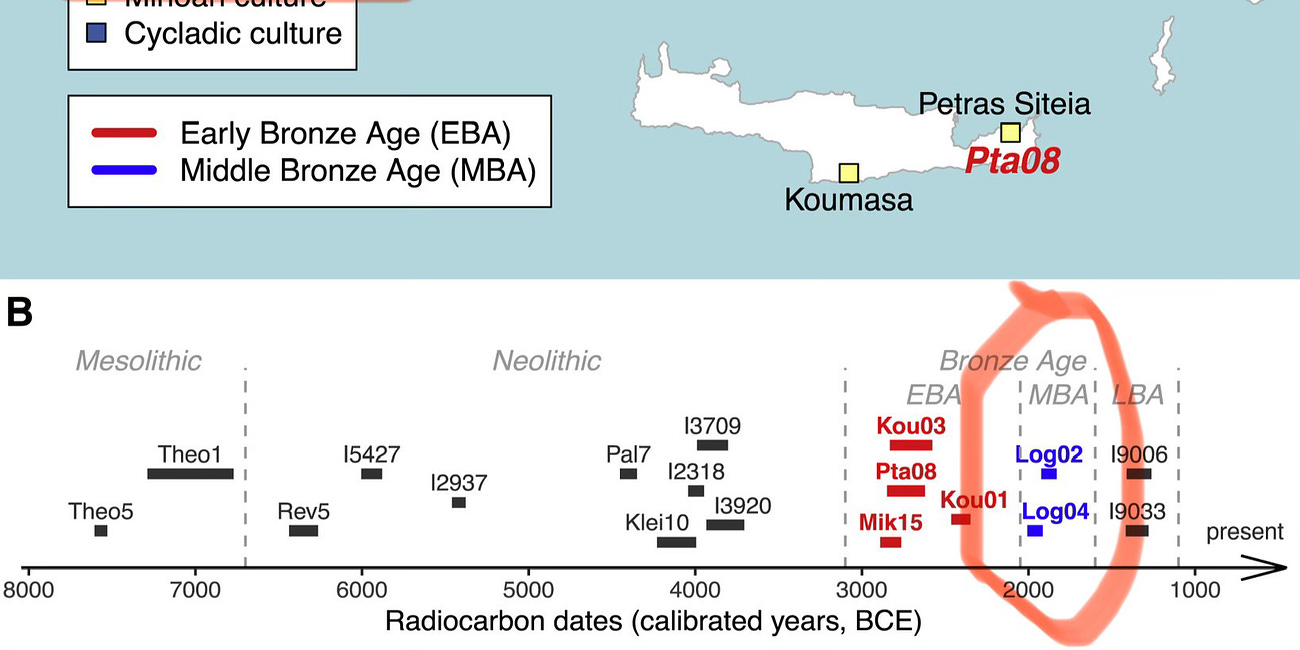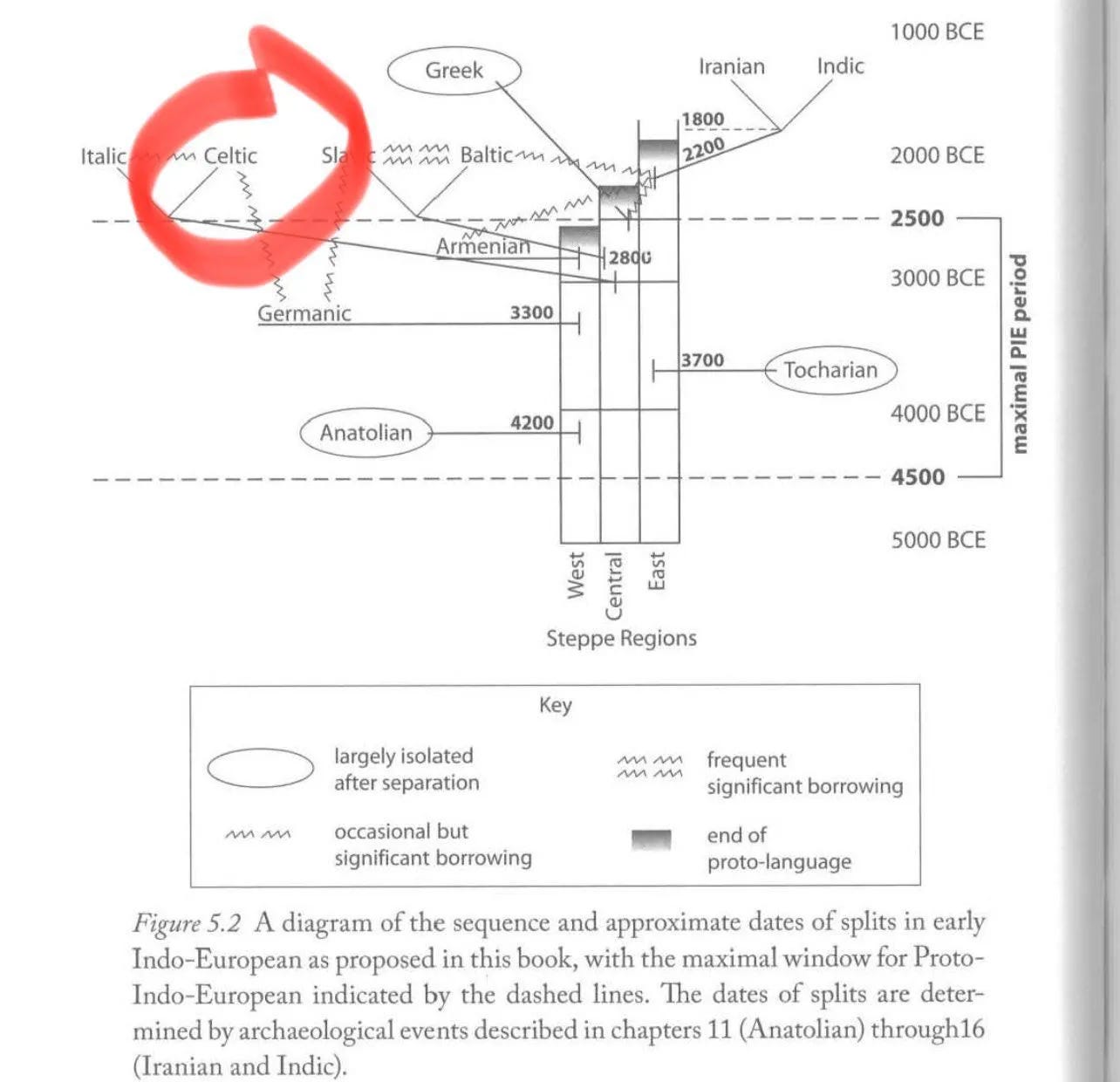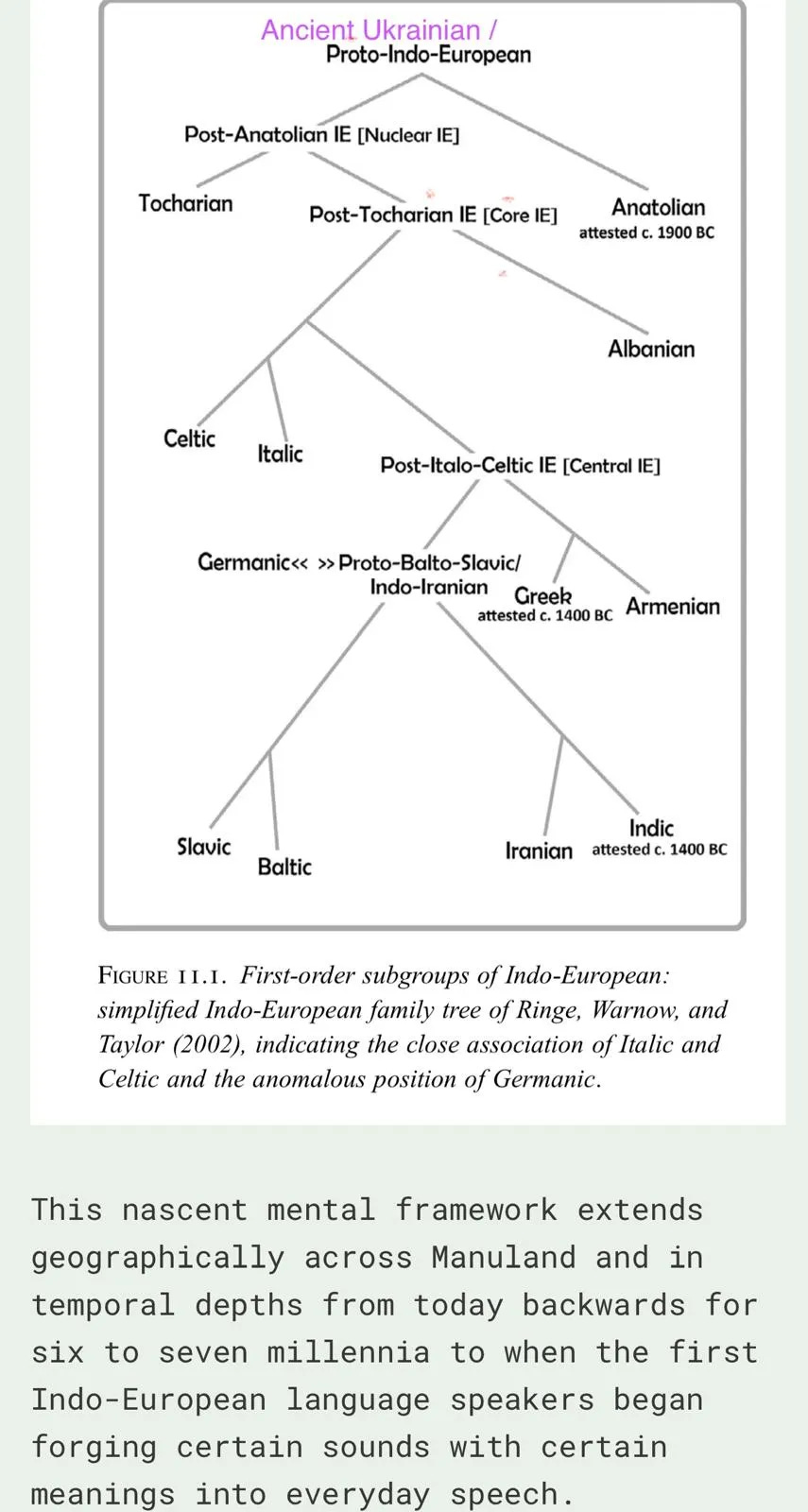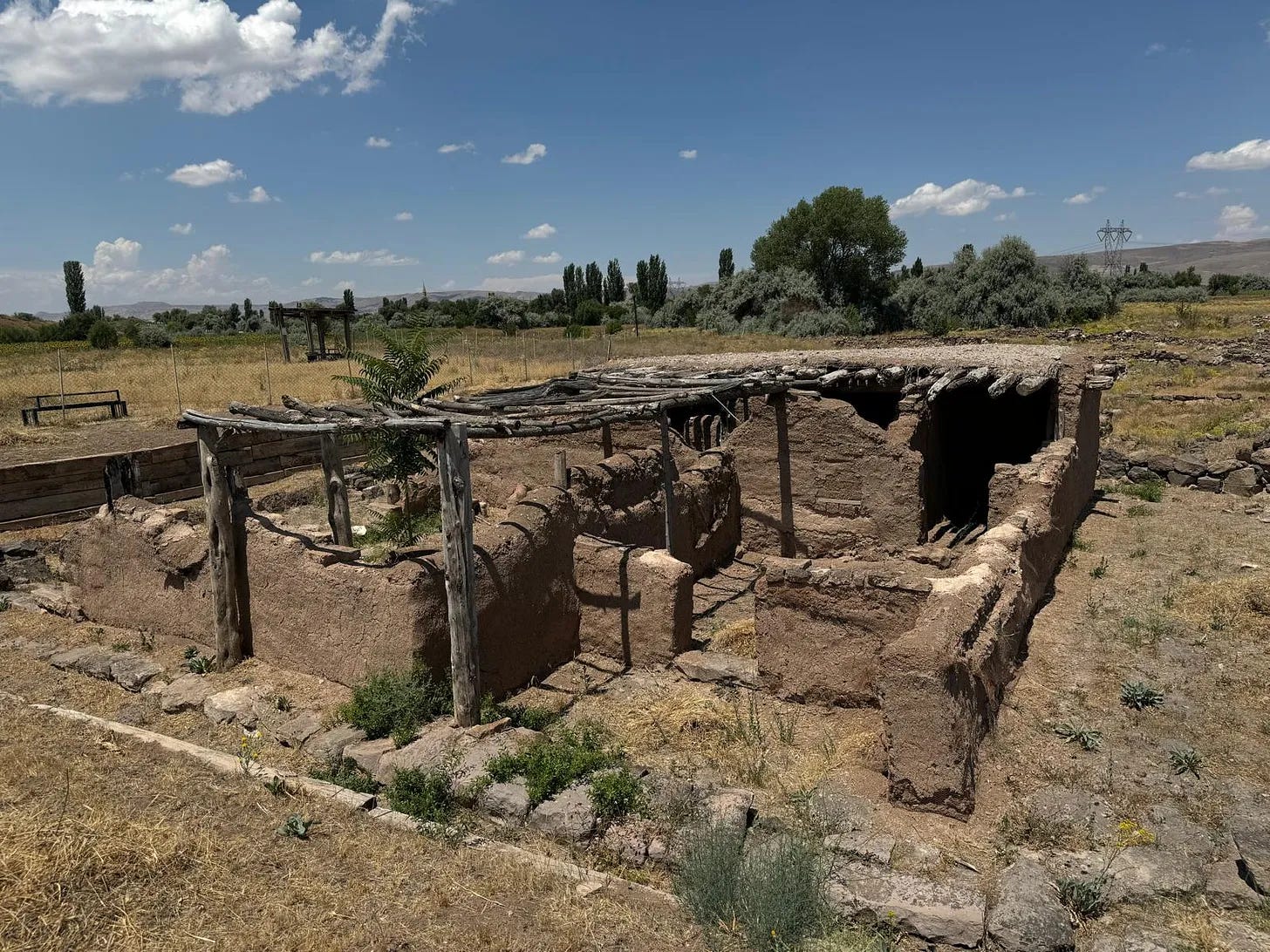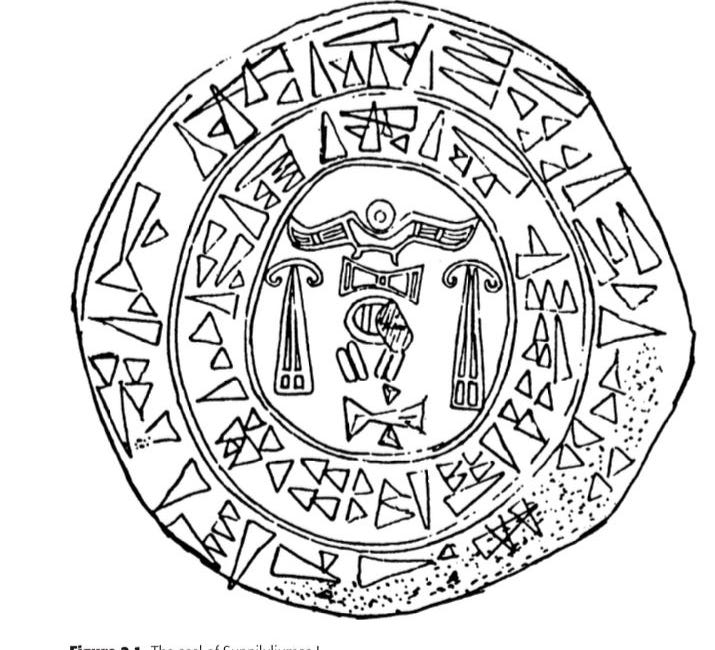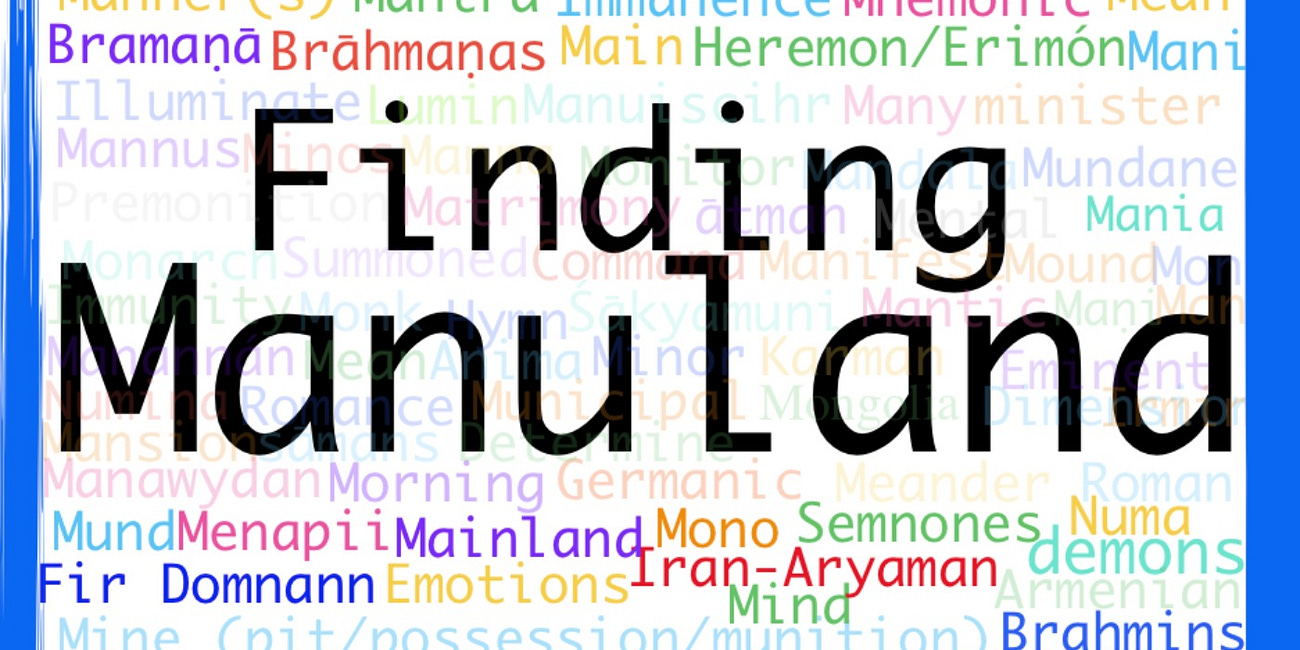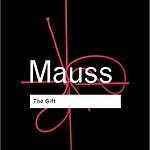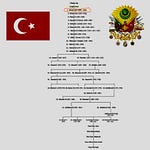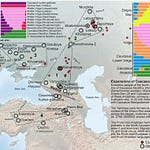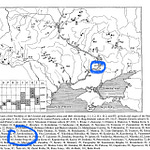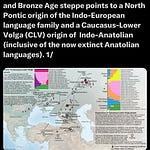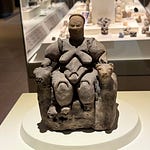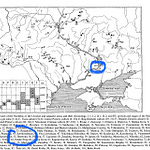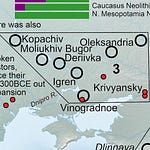Hi there, I'm Decoding Trolls. This is the Power of Mana podcast and the Finding Manuland branch of the Power of Mana podcast. I've recorded two episodes already of Finding Manuland and we're going to give this the moniker Episode Zero because it's an introduction to the podcast.
I want to challenge this view that many of us have and we hear anecdotally whenever anyone mentions, for example, that the etymology of a particular word comes from ancient Rome or ancient Greece.
We have a vague idea that Western civilization emanated from these two cultures. And what this vague idea, which is inculcated into us further each time someone gives us an etymology from Latin or Greek, which sometimes are genuine and sometimes aren't, what is inculcated into us is an absence, the absence of the actual common source from which all Indo-European languages emanate. And this is something that has emerged into my consciousness over the past three to four years as I began to research the MN.
What I now see is this MN sound immanent in most sentences which we speak or think in Indo-European languages.
And so the first purpose of Finding Manuland is to take us on mental journeys across the space between Ireland and India, where traditionally we speak Indo-European languages, which themselves emanate from a common source in a geographical location many of us don't know much about, but it's in southeastern Ukraine between the rivers, the Don and the Dnipro River, and specifically in Mykolaiv Oblast, which is the type site, as archaeologists call it, of a people, again, most of us haven't heard of, called the Yamnaya.
These Yamna created the first Indo-European language in that area. So finally, Manuland will take us on mental journeys across the space between Ireland and India through the medium of my physical journey.
So I will be telling you and explaining to you and illustrating to you the meanings in finding Manuland through visiting actual places, geographical locations. We will visit there physically and I will mention many of the places I have over the past three to four years explored and we will visit them through the spoken word.
Finding Manuland also moves us across time from 4000 BCE until the present, so space and time.
So most of us, our mental models of the past will begin if we're lucky and we've been trained or educated or grown up in a particular culture Most of our mental models will begin maybe around 1000 BCE, which is the time of the historical King David, the first king of the state of Israel, who features prominently in the Bible and the Old Testament of the Bible. David itself is an Indo-European name and David's father and forebears, or rather his mother's father was Uriah the Hittite. And until relatively recently, maybe about a century ago, all we knew about the Hittites were through the Bible and through the fact that King David was the grandchild of a Hittite. And this time frame of 1000 BCE for us is the limit, but those of us who will listen to Finding Manuland will expand our portfolio of events from 1000 BCE backwards to around 4000 BCE.
This is the moment when the Yamna culture, as far as we know, began in its way that interests us in southeastern Ukraine, insofar as the Yamna created the first Indo-European language. And it was the actual Yamnaya migrants and their cultural and genetic descendants who between 4000 BCE and 2500 BCE spread Indo-European languages to the space between Ireland and India in such a way that it then divided into all the main languages.
Indo-European languages, some of which are extinct and some of which we speak today, Armenian, the Germanic languages, which includes English, the Romance languages, the Italic languages, which includes Latin and Spanish and Italian and French, and the Celtic languages, which includes Irish and Welsh, and the Baltic languages, the modern Slavic languages, and the Anatolian languages, which the Hittites were the first great Indo-European empire. And the Hittites.
So remember King David, the first king of Israel from around 1000 BCE, where the historical King David lived, he was the grandson of a Hittite. Uriah.
And the Hittites claimed their origins in a place which I visited relatively recently, which we'll talk about, called Kultepe, which is in modern Turkey, which is modern Anatolia. And it is generally believed by those who know these kinds of things.
I I am standing on the shoulders of giants in Finding Manuland. I've read thousands of texts from the greatest and the best researchers over the past few hundred years and cutting edge research on the analysis of ancient DNA, for instance, to discover the stories which I will recount in Finding Manuland.
The general consensus among contemporary scholars is that the Yamnaya, the cultural ancestors of the Hittites, left southeastern Ukraine around 4100 BCE and either traveled across the Black Sea, that's my pet theory, or around via the Balkans, if you can imagine that. So again, I'm expanding your mental models.
You may have an idea of the space between Ireland and India, but by the end of Finding Manuland, which I hope will be actually quite infinite, you will populate this space in your mind, in your mental model, as I have, with actual places and names and times and events.
So if you imagine people walking around from southeastern Ukraine past Odesa into Romania, to Bulgaria, Turkey, and around and down the west coast of Anatolia, where some of you might have been on holiday to Bodrum, which is the ancient place of Halicarnassus, And then they spread eastwards from there.
So from around 4000 BC, these people left Ukraine, southeastern Ukraine, and over the course of hundreds of years, through migrations, gradually got into Anatolia. And then from there, the language from around 3700 BCE, and I'll post on the page for this website some of the language trees and estimates of how this happened, spread from there across the whole of Anatolia so that around 1900 BCE in this place called Kultepe / Kanis, which is in central Anatolia, central Turquia, which I visited, a community there of Anatolians and Assyrians who left us 23,000 texts, which we can now read in a library.
That community then was seen as the origins of the Hittite Empire, which was one of the three great empires of antiquity alongside Egypt. and Babylon. But all we knew of the Hittites, we knew from the Bible until relatively recently.
But the Hittite empire itself lasted maybe around 300 years from its height, from around 1600 before the Common Era to around 1200 years before the Common Era. And we know a lot about the Hittite Empire from its imperial library, which was discovered in 1908 in a place called Hattusa / Bogazkale, which I also visited recently and which we'll talk about in the future because it's a really important source of information about many stories.
And the historical King David, the founder of the King of Israel, grandson of a Hittite, Uriah, actually... We now know that Uriah was not a true Hittite. He was what we call a Neo-Hittite.
So after the Hittite Empire collapsed around 1200 BCE and some recent researchers believe that the absence of the Hittite Empire from The historical record for really for two millennia until very, very recent for three millennia was a purposeful act. So it was purposefully wiped from this historical record.
So this is why even today it's not really part of most of our mental models. And we think of history beginning at 1000 BC with King David and his Indo-European name and his Neo-Hittite name. grandfather. And so the Neo-Hittites were what happened when the Hittite empire split and it lost its territorial integrity and its sovereignty and its prosperity.
The Hittite Empire split into many different communities. And in today's Syria, many of them established their communities in today's Syria, which had been part of the Hittite Empire. And that's where the historical King David's grandfather, Uriah, came from.
And what we will do in finding Manuland is, as I've done a little bit there, is I've taken you from 1000 BCE in Judea, where the historical King David lived, and I brought you back to 4000 years before the Common Era in southeastern Ukraine. I provoked in your mind the idea of Yamnaya migrants walking past Odesa, past Romania, past Bulgaria, into modern Turkey, down the west coast, and fanning out eastwards and bringing with them, Indo-European language.
Why No Mana in Hittites’ Mythological Founder Monarchs’ Monikers?
Here are the first words in any Indo-European language, for which we have written evidence.
I've also provoked in you the idea that maybe they came across the Black Sea or as some of the latest analysis of ancient DNA of mitochondrial DNA suggests is that in fact the Yamnaya migrants came the other direction so they went instead of going around by Romania and Bulgaria that they went around by the Caucasus and into modern Armenia and spread from there eastwards across Anatolia to spread Indo-European languages. What we do know is and this was discovered by a Czech artillery officer in around 1921 who was able to decipher Hittite hieroglyphics sufficiently to determine that Hittite was an Indo-European language.
So the Indo-European languages existence of this family of languages was discovered by Sir William Jones of Welsh, Sanskrit and Iranian Persian scholar. He discovered this in India as he was having the laws of Manu translated.
Bono, Manna, and the Discovery of Our ‘Common Source’
And thus the discovery of the Indo-European family of languages and culture was announced. One balmy night in Kolkata. 2 February 1786. By William Jones, a Welsh Oxford-trained Persian expert and lawyer, in his second presidential address to the Asiatick Society which he had founded, shortly after arriving in India to be a judge.
And this is one of the reasons why we call this finding Manuland. Also, I want to give a moniker to the space between Ireland and India, because we don't have a moniker for it. And we don't, we think of these as disparate cultures, which of course they are.
But there's this one uniting similarity between all of these cultures is that traditionally we speak Indo-European languages in this geographical space between Ireland and India. And William Jones discovered the existence of the Indo-European languages, which then provides this underpinning, this undermining of the idea of a space, a geographical space where we are united in our diversity, that we speak languages which emanate from a common source in southeastern Ukraine. And one of the abiding messages in Finding Manuland is that this is a message of unity, that we are very diverse, but we are all of the same people.
So we will use this moniker Manuland to describe this this geographical space but also as a purposeful method means of transforming our mental models of this space and of this time from 4000 BCE before the common era until today in 2024 because we will range around this space and this time like the Yamnaya themselves and at the moment it might seem quite blank to you many of the countries and places that we'll visit and many of the times But I will purposefully, and I will repeat myself a lot through Finding Manuland, because what I'm trying to do is inculcate, I'm trying to fill in these blanks between 4000 BCE and today, and these blanks in the geographical space. And the purpose of all of this is to... rebuild our mental models of how the past and the present interact.
And through Finding Manuland, we'll watch how our mental models expand. So we begin around 4000 BCE with the Yamnaya community. Notice the MN sound in Yamnaya and in community. We begin around 4000 BCE with the Yamnaya community who lived between the Don and the Don Hyper (Dniepr) rivers of ancient Ukraine.
These Yamnaya created the first Indo-European language. They buried their dead, covered in ochre with their knees flexed in hundreds, hundreds of thousands of mounds, of burial mounds, tumulus, which still remain in the lands between Ireland and and India in this place, which we'll call Manuland. The Yamnaya also had a contract with Skyfather, Dyeuspater.
Ancient Ukraine’s Don-sounding Rivers, Yama, and Lords of Death
The similarity between the moniker Donn (Ireland’s pre-Christian Lord of Death) and the names of rivers which embodied Gods, Lords of Death and the passage to the afterlife across the Indo-European cultural zone may be significant.
So forgive my pronunciation of all of these words, but I hope you'll get the picture. And I will post on the page for this webcast or this podcast, rather, some of the references, which will help you See the actual how the modern linguists write these.
So the religious identity of the Yamnaya, which then spread along with the language, was very important. The idea was of a contract with Skyfather, Dias Pater. And in return for sacrificing to Sky Father, the community's sovereignty, security and fertility stroke prosperity, these three dimensions necessary for a healthy community will come into our story of Finding Manuland a lot.
So the idea the Yamnaya used, which was spread into various other Indo-European religions in one form or another, was that in return for the sacrificing an animal to Skyfather, the community would be protected by Skyfather. And Dyeus Pater is the only animal religious term that is imminent in each of the main Indo-European language families.
We are very familiar with Zeus Pater, Zeus Pater from the supreme deity in Greek culture. So the Yamnaya whose descendants, whose cultural and, in the case of Greece, genetic descendants, the latest research published in Cell Journal, demonstrates that the Mycenaeans, the Achaeans, the Danaeans, the first Greeks, the first Greeks are... the first people occupying the land we understand as Greece today, who spoke in Indo-European language, and the first Greeks who Homer calls the Danaeans or the Achaeans. The first Greeks, their genetic ancestors left ancient Ukraine and became the Mycenaeans. They would have left just before 2500 BCE.
So this is why this time range between 4000 BCE and 2500 BCE is very important because, scholars, there is a consensus among linguists that that in order for the diversity we experience today in Indo-European languages, think of the difference between Irish and Albanian, there's only 42%. There's this method of comparing Indo-European languages called the Swadesh method, method and the swedish method has a hundred different words which describe aspects of humans and community which are common to all cultures like hand like finger like eye and it uses this list and there's a few different versions of the list to compare the how comparable different indo-european languages are so for instance Irish and Albanian have, I think it's 42% cognateness. Irish and Armenian have 43% cognateness. But Irish and a Germanic language like English have something like 63% cognateness. And those percentages relate to the number of these words in the Swadesh list, which emanate from...
clearly from the same common source from the same root and we can trace these uh words like deus meaning sky bright sky which became god which is this idea that when you die you go into the sky well initially It was only heroes which went into the sky. Everyone else went into mounds.
Death Episode: Finding Manuland Podcast
Deity, Death, day, *Tiwas (Germanic deity who gave their name to Tuesday),… all derive from the Ancient Ukrainian word for sky *Dyeus. That’s right: when you say someone is ‘dead',’ quite sweetly, you’re saying, ‘they’re in the sky.’
They went into Valhalla or the earth or to hell with one L. But eventually through the spread and I suppose inflation, we all ended up going into the sky in our conceptions, into the heaven, to sky father. And that is in death, the idea of death, death.
So we go into the sky when we go through the deus process, deus, death, deus. And so this word deus, which is in all Indo-European languages, the only religious term, which is in every single Indo-European language, we know for certain then that that comes from the common source language. from before 4000 BCE, from before the first migrants left ancient Ukraine and they left and ended up in Anatolia to eventually find the Hittite and Luwian and other Indo-European languages which are now mainly extinct in Anatolia and Turkey but for which we have many written records we know because this word is in those languages that the Yamnaya spoke they used this idea of Dyeus the sky and God the deity and the idea of going into the sky and the idea of making a contract with God and sky father before they left and so Zeus Peter in ancient Greece Jupiter in ancient Rome and in India we have a Duha Peter as well so we have this evidence of this contract with Sky father and it's all of course interesting that Saint Peter In the Christian faith also is this idea that you go to Saint Peter and he weighs your fate with white and black stones at the gates of heaven.
So these are all Indo-manifestations of an Indo-European inheritance. And when you bear in mind, as we will in Finding Manuland, and we'll look into the Indo-European presence in Judea, hundreds of years before the historic King David lived around 1000 BCE, and hundreds of years before the Bible, so the Old Testament arrived, was the events in the Old Testament began, I mean, obviously Genesis and stuff, but with King David and King Solomon around 1000 BCE.
Ancient Ukrainians in Judea
Hearing the word Yamnaya in the context of Ukrainian barrow-grave culture reminded me immediately of the Buddhist Yama.
And then over the following millennium, they were gradually written down in various different forms and became what we understand today as the Old Testament and the New Testament.
But for 1400 BCE, we had Indo-Europeans living in Judea. And our evidence for this is in what are called the Amarna, again, Amarna letters from ancient Egypt, which is an archive from 1400 BCE. And this has letters in it referencing Indo-European monarchs in Judea. And indeed in Aleppo in Syria, which is around from where King David's father or grandfather Uriah emanates. So we understand that this soup of different cultures obviously included Egypt and Babylon, but also included Indo-European and Hittite and the cultural and genetic descendants of and religious descendants of the people, the Yemnaya, who left ancient Ukraine from between 4000 BCE and 2500 BCE.
Out of this milieu came what we consider to be the Bible. And so again, our mental models that the Bible is purely the emanation of the Semitic language family and Semitic culture is itself going to be contested in finding Manuland.
And this is part of what I'm offering you and those of you who read and listen to this podcast. We are going to rearrange our mental models today of time from 4000 BCE and space, but also of our culture. So today, over half of humanity uses sounds and meanings first forged on the Ukrainian steppe.
Immanent in the genome of most humans who live in Manuland is the mitochondrial DNA of our Yamnaya ancestors. And some of us might know that we actually carry, each of us carries two different genomes. We carry our main genome, which is based on the nucleus of our cell and every single one of the cells, the zillions of cells in our bodies carry. has two different genomes and one of the genomes, mitochondrial DNA, which is much smaller than the other, maybe has 32, 33 genes in it. This is what is used in the latest ancient DNA research that demonstrates that most modern Europeans and most people in Manuland carry to one degree or another the mitochondrial DNA of our Yamnaya ancestors.
So until 2015, when Nature published research, which we'll refer to again and again, this is known as the ancient DNA research, revolution. Linguists and archaeologists had worked out that we probably emanated from the Yamnaya and that the first Indo-European languages were spoken in the river valleys of eastern and southeastern Ukraine.
However, since 2015, we have been able to isolate elements in our genome which are traceable with certainty now to the area between the Don and the Dnipro. The Dnipro and some of the latest research demonstrates through another method which complements looking at the mitochondrial DNA inside each of our cells, which is called isotopic analysis. So we today can look at the teeth of ancient humans, like ancient Yamnaya from Southeastern Ukraine, and we can determine beyond all probabilities where the food which was grown that was eaten by these ancient humans, where the food was grown.
And we now know through the isotopic analysis of ancient Yamnaya that between the Don River and the Dnieper River, these ancient Yamnaya's teeth were formed. And so this sparks the other element which you will often see in the literature which I will reference and we will try to avoid. And again, mental model will be changed, hopefully through Finding Manuland, is this idea of steppe ancestry or Pontic-Caspian steppe. So you'll often read that Indo-European languages began the Pontic-Caspian steppe or the steppe of South Russian or Russia or the South Caspian. the southern steppe or steppe ancestry, these are all placeholders from a time before we understood through isotopic analysis that the Yamnaya came from southeastern Ukraine.
Decolonising Prehistory: Our Expanding Mental Model of ‘History’
Finding Manuland is a travelogue of physical and mental journeys through today’s Europe and Asia.
So we're not only decolonizing or decolonizing the, we are rather decolonizing our view of prehistory so that rather than looking at the past and not thinking about ancient Ukraine, as being in any way analogous to ancient Germany or Ireland or Greece or Rome.
As part of Finding Manuland, we will decolonize our mental model. We will create a presence where there is an absence. And this will be true to history and true to the science, the latest science and the latest research, of course. But we are also purposefully recentering ancient Ukraine as part of our mental models of where we come from in a way that very few researchers are doing yet. And this is extremely important in the light of the war in Ukraine, because part of Russia's message to the world is that it is the originator and the inheritor of the mantle of the origins of our culture whereas in fact the culture it is trying to eradicate is the inheritor of it. And so this is a very important part of Finding Manuland as well. We are recentering Ukraine and ancient Ukraine in the mental models of humanity and we are giving ancient Ukraine parity of esteem with other countries…
cultures we have no problem with calling ancient Greece Greece and with seeing continuity over thousands of years between ancient Germany and Germany and Ireland and England and France and parity of esteem demands all modern nation states all of whom trace their origins and their raison d'etre to various paths, pasts, which are mythologically or recorded in stories and in texts from the past. We need to do this with Ukraine, particularly, not least because it actually turns out, and I am as surprised as anyone of this, as someone who spent 2015 to 2022 in eastern Ukraine as a diplomat, I had no idea until around 2022 about the Yamnaya and that actually not only should we accord ancient Ukraine parity of esteem with other ancient cultures, but actually since the Yamnaya began the first Indo-European language, we should probably agree. accorded a bit more parity of esteem. So decoding trolls is the first, that's me, I'm the first to discover that imminent in almost every sentence we speak or think through an Indo-European language is an MN sound coupled with meanings that were first forged by our Yamna forebears. This might be a coincidence, or the MN sound might be the fundamental cryptotypic semantic signaling system undermining the matrices of metaphors through which we communicate today. So that's quite a mouthful.
So what I have discovered is that there's this MN sound which is imminent in almost every sentence we speak. It is imminent in the monikers of the mythological monarchs who founded many of the great Indo-European cultures.
This MN sound pops up continually over this 6,000 years since the Amnaya first left ancient Ukraine. Sometimes the MN is a coincidence. Sometimes it is borrowing. And other times it comes from a common source, the ancient Ukrainian word for the moon, modern linguists call menyot. And we have... Around a thousand words which were used by the Yamnaya.
I call it ancient Ukrainian. Most other scholars call it Proto-Indo-European. And we have about a thousand words which... are the roots of words which we use in today's modern Indo-European languages. One of them, for instance, as I mentioned, is Dyeus, meaning sky, sky, bright sky, the idea of God, deity, deva. That is in every Indo-European language, but other words are, for instance, they appear in Irish and Armenian. And generally speaking, if there is a root of a word in an Indo-European language, which is similar from an Indo-European language, traditionally spoken, West of Ukraine and East of Ukraine, then we can, all other things being equal, consider that that word comes from the common source.
But in certain cases, like the word Dzias, we've got this word in every single Indo-European language. So we can be certain that this emanates from a common source and was therefore spoken and used by Yamnaya migrants before they left ancient Ukraine around 4000 BCE and was used also by Yamnaya between 4000 BCE and 2500 BCE.
2500 BCE being the latest moment one community of Yamnaya lived together. And this community then broke up and migrated and created all of the Indo-European languages which we speak today. So there is a few other sounds which are imminent, which are really important in Indo-European languages, which we'll also talk about later, the writ sound so it's in sovereignty writ as in law it's in security fertility prosperity right writ and that that is imminent in the mythological texts as well as in our ordinary language so it's another contender to be one of the fundamental cryptotypic semantic signalling systems undermining the matrices and metaphors through which we communicate today.
So it's a founding assumption in Finding Manuland that all of our language is made up of It's parasitical on metaphors. So we've got a whole matrices, a networks of metaphors through which we say this is like that, that is like this, and the whole idea of meaning - which has mn in it - is that you have something different from something shining through it like the light shines through the moon or the shape of the moon shines through the luminescence illumination of the moon and MN is in meaning. And this is one of the reasons why I say that MN is the fundamental cryptotypic semantic signaling system, undermining the matrices and metaphors through which we communicate today, because the idea of meaning, so the meaning of meaning, but also the moniker meaning, the word meaning, this is also an MN sound. So we have this other one, RG RIT, RT meaning truth, this is a really important cryptotypic semantic signalling system to an Indo-European language and we'll talk about it again because if I'm saying, if I'm claiming MN sound is the fundamental, then I have to demonstrate using others that mn sound is more fundamental than it so the rg rit one is will go into is really important but not as fundamental as mn then there's others which i have also found inside almost this don dn sound which is really important in the danaeans the first greeks the don river the danube those are the two rivers which set the boundaries of ancient Ukraine, really. And in between them, the Donetsk, where I worked for three years on a bridge over the Donetsk in eastern Ukraine, when I discovered the Yamnaya's existence, the Don Iper, the Dnieper River, where I worked as a diplomat living in Dniepro, the city of Dniepro in eastern Ukraine for four years between 2018 and 2022. the Don Iper, then we have the Donister, the Dniester River, very important river as well in the European context, and then the Danube.
So even modern Ukraine has these rivers in the capital of Armenia. Yerevan, we have the Harazdan River, we have the Danaeans, the first Greeks, we have down in a place I also visited relatively recently, which we talked about in the first which we will talk about in future podcasts and talked about before, which is Karatepe, which is where we found the Rosetta Stone that enabled the decipherment of Luwian, which is an important Indo-European language in Anatolia, and where we have documented. You'll see some of the images I've used so far to illustrate the power of Mana and Finding Manuland podcast come from Karatepe.
These are stone carvings of mythological stories and they're an important source and very important element in Finding Manuland because they show us what kinds of stories were being spoken about around 800 to 700 BCE, before the Common Era in the ancient empire or kingdom of Cilicia, which had been under the Hittites, but then... became an important gateway through the gates of the Amana gates into Assyria, modern day Syria. And so that area was ruled by the Danaeans. And we have the references to the Danaeans in five or six ancient Egyptian texts as being the sea peoples and coming from Greece.
And The second grouping of Irish Indo-European migrants of ancient Yamnaya descendants, cultural and linguistic descendants, onto the island of Ireland in the mythological record were... the Tuatha de Danann, the worshippers of the goddess Danu. So we have this DN sound as well, which is imminent in many of our mythological texts, which is very, very important to contemporary and tracing paths to the past. But I maintain it's not as fundamental as the MN sound, mainly because the DN sound isn't as common in today's language in a traceable way. in a way that we can trace the meaning of it. So moon, for instance, in modern English, clearly relates to Meh₁n-ṓt , which is the word the ancient Ukrainians used for moon before 2500 BCE. It has the same sound and it has the same meaning, so moon. But in many cases, the DN sound isn't as fundamental. But we'll go into this in more detail later. I just want to justify why I say that MN sound is, might be the fundamental cryptotypic semantic signalling system undermining the matrices of metaphors through which we communicate today. So MN might well be a permanent monument, remnant and reminder of the Yamnaya and indeed of mana. And this is where we get to the key.
Moon Monitors Giant Trident.
M-N- sound first appeared in the Ancient Ukrainians' word for the Moon (*Meh1not).
Mana, the subtle energy we exchange with human animals is anchored in almost every thought we have. Mana, Wudan, Nus, Holy Spirit, Prana, Chi, Ki, Libido, Mungo, Karman, out of which Karma comes, Synchronicity, Anamamundi, Renda, Manutu, Wanga, Tondi. These are all manifestations of the same phenomenon that was present in the minds of the Yamnaya. as in all ancient and contemporary humans. If only we can connect again to manna and harness manna to impact positively every interaction we have inside our communities. So, so far I've talked about re-colonizing your temporal mental model from populating it with events and places and peoples from 4000 BCE, before the common era, common era, to the present.
The 'X Energy' Mana
Here are some of the fundamental sources and readings underpinning this episode of Finding Manuland - the story of the X Energy’s immanence in humanity’s main linguistic community.
I've talked about populating your mental model of the space between Ireland and India. But here, Finding Manuland wants to populate your consciousness in the present with this idea of energy and energy exchange. And energy, as far as we know, our cells' energy is created. It's this called ATP energy. which interestingly is a supermarket in modern Ukraine.
But that is definitely a coincidence. I'm not suggesting that ATP named itself after the actual fundamental energy source in complex cells that we as humans and animals and actually, interestingly, mushrooms also have. They also have these two elements. two genomes inside every cell and it is our mitochondrial dna which creates this energy this electric charge without which we cannot exist and so that is the micro on the cellular level in our trillions of cells we have these little energy factories and that is coded for through our mitochondrial cells DNA and it is this mitochondrial DNA which enables us to understand that we are in most cases in the people between who lived traditionally between Ireland and India we have to one degree or another to one degree of dilution or another the we are the genetic the actual genetic descendants of these yamnaya we have the mitochondrial dna passed along to us through the matrilineal line through our mothers and our mothers mothers and our and so on of the yamnaya who left ancient ukraine so today i'm using i'm speaking to you in an indo-european language english which is part of the germanic family mn in germanic from manus And so clearly I'm the cultural descendant, the Yamnaya are my cultural ancestors, but I also have the ancient DNA of the Yamnaya as for instance, on the island of Britain, we now know through peer reviewed research published in the preeminent scientific journal in today's humanity, Nature, it was published in around, I think in 2021 actually, that the genome of 90% of the population of the island of Britain changed.
So before 2450, before the Common Era, there was no trace of Yamnaya in the genome and the people on the island of Britain. And then over the course of a very short time, maybe a couple hundred years, it might be sooner or a bit longer, but over the course of a very short period, 90% of people living on the island of Britain suddenly, suddenly, and this is one of the mysteries we will explore, suddenly got Yamnaya into their bloodstream. And they have the mitochondrial DNA of Yamnaya. Yamnaya is suddenly in there. So our starting point is that we do all speak in Indo-European language, most of us, traditionally between Ireland and India. And this was discovered by William Jones, Sir William Jones the Welsh. a Persian and Sanskrit scholar who was translating the laws of Manu, the Manusmirti in India, when he realized that the coincidence between the grammar, the roots of verbs and the vocabulary in Sanskrit, Persian, the Celtic, the Germanic, Greek and the ancient Latin languages. There were so many similarities between the grammar, the roots of verbs, that it was impossible for such similarities to have arisen through coincidence. And that's what many scholars, including myself, that intuition he had. in, I think it was 1782, that, and he announced this publicly around 1782, that we have been researching this intuition ever since. And as far as I'm aware, I'm the first human to notice the MN sound. So many scholars have explore the MN sound in respect of particular poetic or linguistic traditions or religious traditions, either in the Indo-European world or in parts of the world where Indo-European languages came into contact, sustained contact very early on. But nobody else, as far as I'm aware, has put together all of the imminence of this mn sound and brought it up into the the contemporary and nobody else has discovered that this mn sound is probably the fundamental cryptotypic semantic signaling system underpinning all of our interactions and our languages today and this idea of crypto types was theorized which is that there is a level of communication between sentient beings that is only manifest in language but actually exists independent of language. So this is this idea of mana, woden, anus, the holy spirit, prana, chi, synchronicity, karman, mungo, libido, tondi, wong, manutu.
This is this idea that there is this energy exchange which we know is an empirical fact. occurs inside our cells between the nucleus of the cell and our mitochondrial system and out of this exchange of energy we emanate and everything we think and do from the micro to the macro emanates from the construction of airplanes to the wiggling of your finger or of your toe and all of these words I'm speaking and all of these thoughts I have. But the idea is that they're underpinning or undermining all of these evidence of existence and the aggregate we are of zillions of cells and cells…
All the thoughts we have and all the words we have and all the learning we have and the thousands of years of history that we can access through recorded words. Underneath all of this is this mode, this cryptotypic semantic signaling system. And I believe MN is the fundamental signal. cryptotypic semantic signalling system in Indo-European culture. That's important.
I'm not making any claims for the many other linguistic cultures which we know. I'm just dealing with the Indo-European language because I'm fluent in it, in one or two of its manifestations. and more than half of humanity speak an Indo-European language. So the MN sound being imminent in most of our thoughts and communications in an Indo-European language is quite an interesting insight into what this energy exchange, which is fundamental and which so many other religious, academic and New Age scholars and cultures, mana, woden, noose, holy spirit, prana, chi in India, or sorry, in China, ki, prana in India, synchronicity, the police, that's a joke, karman in Buddhism and other Indo-European religions. So I think we can harness this by keeping it in mind and finally Manuland is trying to expand our mental models of time, of space, but also to help us understand about this energy exchange so we can harness it positively, to impact positively every interaction we have inside our communities.
So these are the ideas that Finding Manuland will elucidate. They're located in space, time and the culture of Manuland. Our story emanates from ancient Ukraine and it terminates in the questions. Why is this MN sound and its associated meaning so imminent in Indo-European culture? Can we know what this imminence means?
If Mana is what remains of us in others when we leave them, then there is manna. Manna is permanent. Let's communicate positive manna. And finding mannuland will help remind you of this in every interaction you experience today with other sentient beings. And just as a housekeeping issue, once every episode of Finding Moneyland is published or posted, the podcast, I'll then add the corrected automated transcript to the podcast post. So you'll get your email with the podcast in it. But if you would prefer to read the text of the podcast, leave it a day or two. And I will, once I make the podcast, the computer basically reads um, does a, does a manuscript of my, uh, a transcript rather of what I've spoken. And then I will correct that. Um, it'll make some small errors and I'll post that in the post below the post where the podcast is posted. So if you prefer textual means to understand the power of Mana and get your power of
I will service that preference and it's a pleasure to service that preference. But if you prefer through audible means, then listen to the podcast straight away. And thank you so much for being a part of the Power of Mana.
Continued:
Finding Manuland XXX
Finding Manuland takes us on mental journeys across the space between Ireland and India. Finding Manuland moves us across time from 4,000 BCE until the present. Our mental models of how the past and the present interact expand, through Finding Manuland.
Continued from:
The 'X Energy' Mana
Here are some of the fundamental sources and readings underpinning this episode of Finding Manuland - the story of the X Energy’s immanence in humanity’s main linguistic community.
First in series:
Finding Manuland I
In October 2021 I was returning from my final vacation before my forced retirement from my beloved diplomatic posting to Ukraine.




